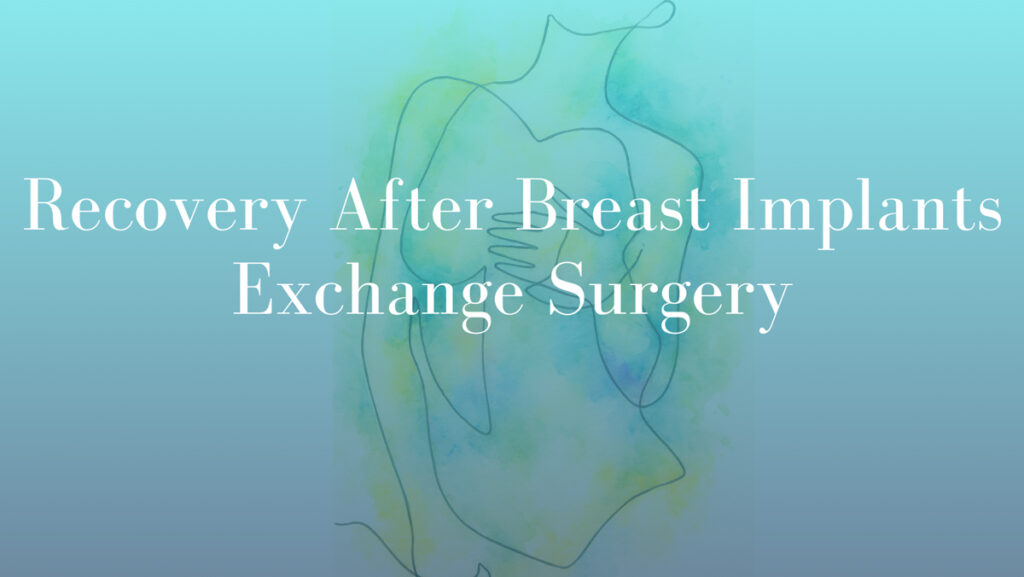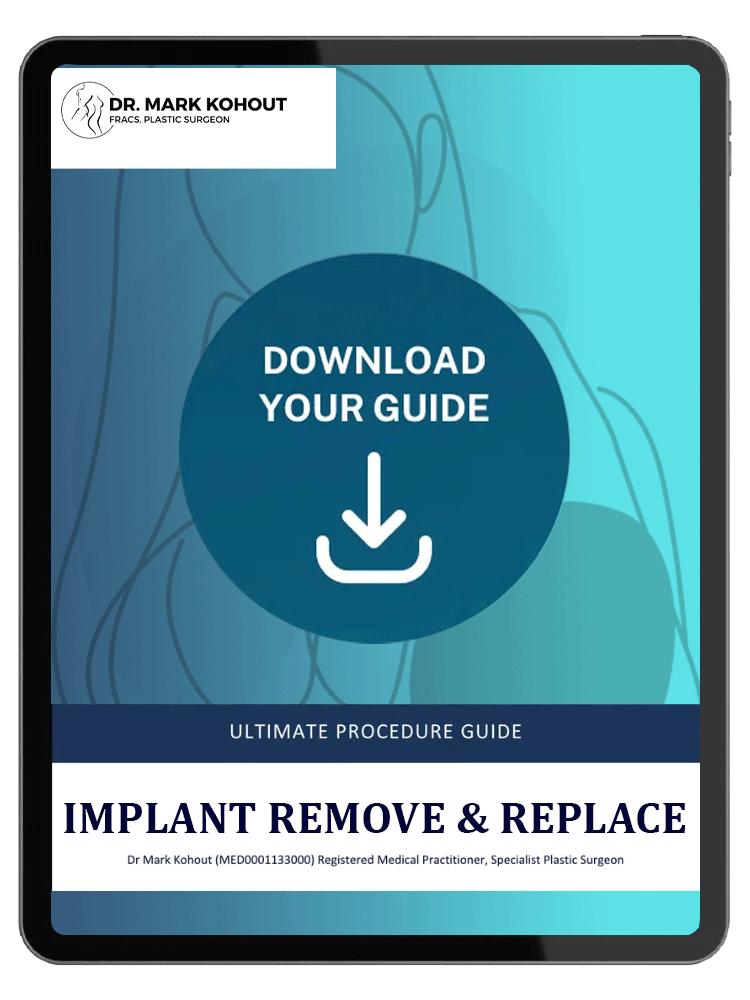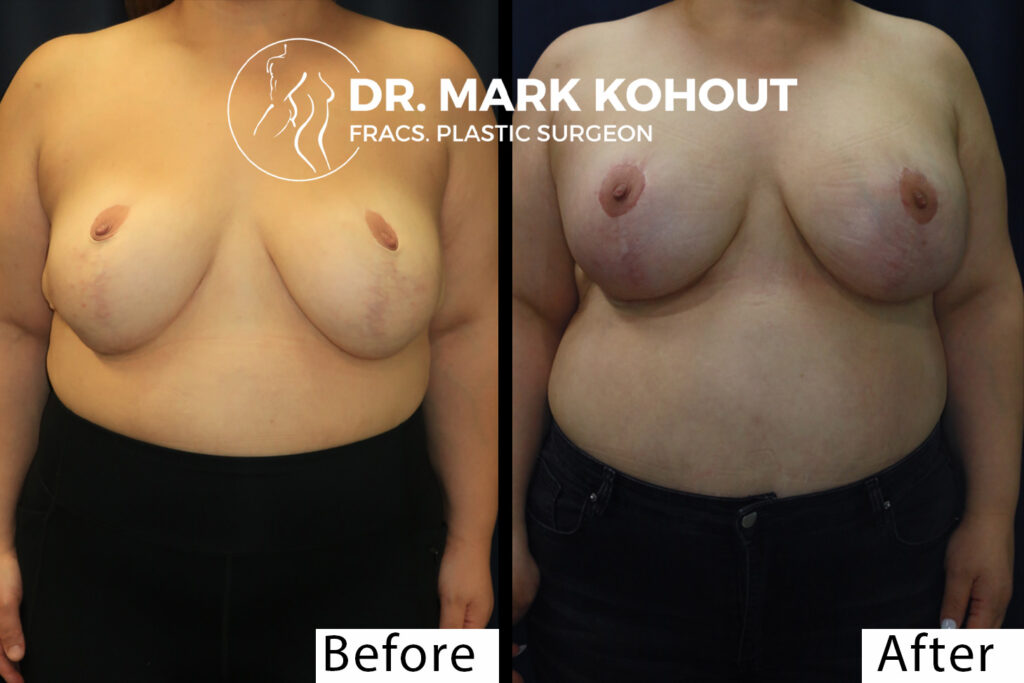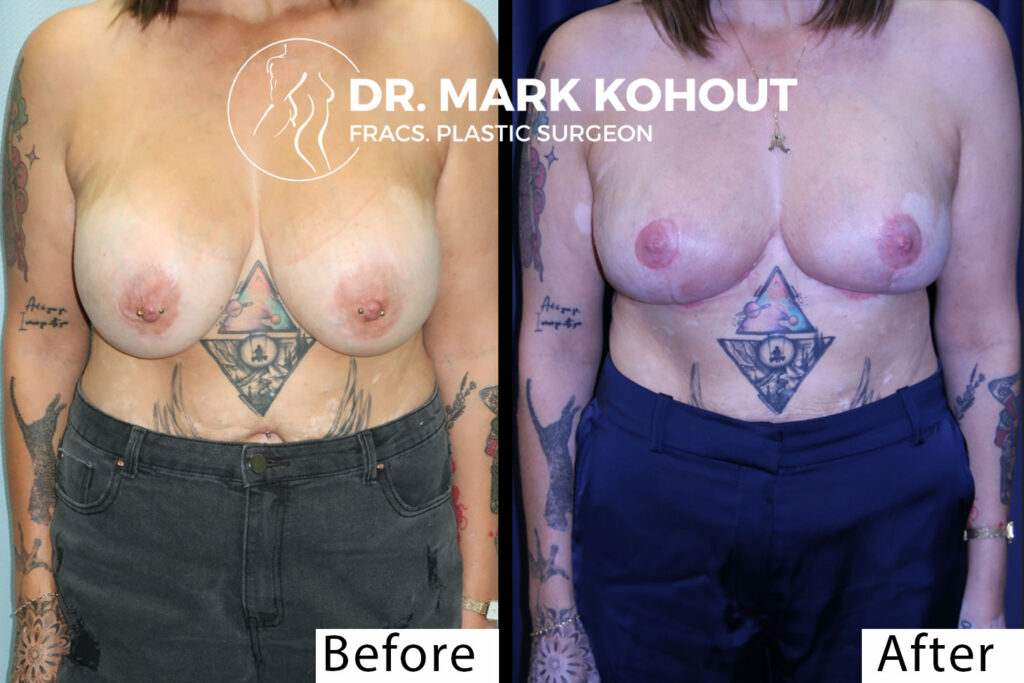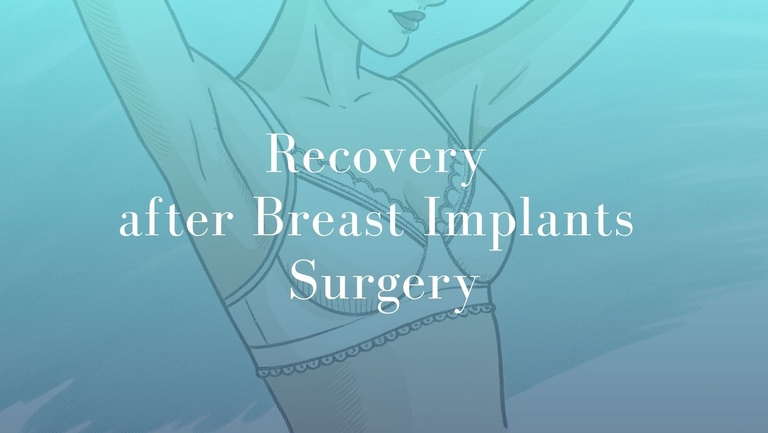
Breast implants have been used for many decades as a way of altering or restoring breast shape and volume. Over time, however, these devices may require replacement, either because of changes in patient preference or because of medical considerations. The process of replacing one set of implants with another is known as breast implants exchange surgery, and it is a relatively common procedure performed in specialist practices across Australia.
While patients often focus on the decision to have surgery and the choices surrounding implant type and size, the recovery period is an equally important part of the overall process. Recovery involves more than simply waiting for incisions to heal; it is a staged journey that requires planning, patience, and ongoing care. The pace of healing, the comfort level experienced, and the return to daily life are influenced by a variety of factors, including surgical technique, implant choice, and general health.
In this article, Dr Mark Kohout, Specialist Plastic Surgeon in Sydney, provides a detailed overview of what patients may experience after breast implants exchange surgery. His goal is to outline the stages of recovery in a clear and factual manner, allowing patients to make informed decisions and approach their surgery with realistic expectations.
Understanding Breast Implants Exchange Surgery
Breast implants exchange surgery is performed when a patient chooses to have existing implants removed and replaced with new ones. This may occur many years after the original procedure, or sooner if there are specific concerns. One of the most frequent reasons patients undergo exchange surgery is personal preference. Over time, aesthetic goals may change, and a patient may prefer a different implant size or shape. In other cases, implant technology may have advanced since the initial surgery, leading some individuals to consider alternative materials or textures that better suit their circumstances.
Medical reasons can also prompt exchange surgery. Breast implants are not designed to last forever, and it is well recognised that they may need to be replaced after a period of time. Some patients experience complications such as capsular contracture, where scar tissue around the implant becomes firm and can distort breast shape or cause discomfort. Others may present with a rupture or leak, which often requires surgical correction. Implant malposition, where the implant shifts from its original position, may also be addressed during an exchange procedure.
In all cases, the decision to undergo breast implant exchange is made after thorough consultation. Dr Mark Kohout, Plastic Surgeon in Sydney, discusses patient goals, medical history, and physical findings before recommending a plan that is tailored to each individual.
Immediate Recovery Phase (Days 1-7)
The first week after surgery is often the most noticeable in terms of physical symptoms and the need for rest. Following the operation, patients typically spend a short period in hospital for observation. Many are able to return home the same day, although in some situations, such as more complex surgery or individual medical needs, an overnight stay may be advised.
During this early phase, patients can expect dressings to cover their incisions and a supportive bra to be in place. This garment is not just for comfort but also plays a role in maintaining the position of the implants during the initial stages of healing. Swelling and bruising are common and can cause the breasts to feel tight or heavy. These symptoms usually begin to settle as the days progress, but it is normal for them to be more pronounced at this stage.
Activity is limited in the first week. Patients are advised to avoid lifting, stretching, or engaging in strenuous movement, but gentle walking around the home is often encouraged as it helps circulation and reduces the risk of complications related to immobility. Rest remains central to recovery during this period, and many patients arrange for assistance at home so they can focus on recuperation.
Follow-up care is particularly important during the first week. An appointment with the surgeon allows for close monitoring of healing, assessment of dressings, and reassurance if there are concerns. Dr Mark Kohout provides clear guidance during this time to confirm patients understand what to expect and what signs should prompt immediate review.
Short-Term Recovery (Weeks 2-6)
As the first week passes, most patients begin to notice gradual change in their comfort and mobility. The stage between the second and sixth week after surgery is often characterised by a transition back to more normal daily activities. Patients who work in office-based or non-physical jobs often feel ready to return after the first or second week, while those whose employment involves heavy lifting or significant physical exertion may require more time before resuming work duties.
Swelling generally reduces during this stage, although the breasts may still appear firmer than expected. It is also normal for the implants to sit slightly higher on the chest at first before gradually settling into a more natural position. Incision care continues to be important, and patients are guided on how to keep the area clean and protected. If stitches were placed, they may dissolve on their own, or a follow-up appointment may be scheduled for removal.
Exercise remains restricted in the short-term recovery phase. While walking and light daily activity are encouraged, strenuous exercise, gym training, and heavy lifting should generally be avoided until after four to six weeks, depending on the advice of the surgeon. For a more detailed breakdown of when and how to safely resume physical activity after surgery, you can read our article on Returning To Exercise After Breast Implant Removal or Replacement (BIRR). Wearing a support bra remains an important element of care, as it helps reduce strain on healing tissues and maintains implant stability.
Living in Sydney offers patients convenient access to their surgeon for ongoing follow-up, and this continuity of care is an important part of recovery. Seeing Dr Mark Kohout at regular intervals allows for reassurance, adjustment of advice where necessary, and early detection of any potential concerns.
Long-Term Recovery (6 Weeks And Beyond)
By the time six weeks have passed, most patients notice that the initial discomfort and swelling have significantly improved. This stage of recovery is more gradual and continues over several months. The breasts usually begin to soften as tissues adapt to the new implants, and the final position of the implants becomes more apparent. Subtle changes may continue for many months, and patients are encouraged to remain patient as their body completes the healing process.
Some individuals experience changes in breast or nipple sensation. These may present as increased sensitivity, reduced sensitivity, or a tingling sensation, and they may improve over time or, in some cases, remain permanent. This is a normal variation and is discussed as part of pre-operative planning.
Most patients are able to return to all forms of physical activity once cleared by their surgeon. This includes higher-impact exercise, weight training, and activities that place greater strain on the chest muscles. However, gradual reintroduction of these activities is recommended, and it should always be done in line with the advice given during follow-up appointments.
Regular monitoring does not stop once the initial healing has been completed. Dr Mark Kohout, Plastic Surgeon in Sydney, advises long-term follow-up to help monitor implant stability and to provide an opportunity to address any concerns that may arise over time.
Factors That Influence Recovery
Recovery is never identical between patients, and a number of factors influence how quickly and comfortably someone heals. The type and size of the implant can play a role; larger implants or those that represent a significant change from the previous size may require tissues to adapt more extensively, resulting in a longer recovery.
Additional procedures also affect recovery. For instance, if a patient requires capsule removal or a breast lift alongside the implant exchange, the surgery is more complex, and healing may take more time. General health is another important factor. Age, lifestyle, smoking, and pre-existing medical conditions all contribute to how efficiently the body repairs itself after surgery.
Perhaps the most important factor, however, is adherence to the post-operative plan. Patients who carefully follow the instructions provided by their surgeon generally find recovery is smoother and complications are less likely. Dr Mark Kohout provides individualised care plans to his Sydney patients, meaning that advice is tailored to their specific surgery and circumstances.
Risks And Considerations
Like all surgical procedures, breast implants exchange surgery carries certain risks. General surgical risks include bleeding, infection, and the development of visible scars. In the case of implants, there are also risks more specific to the devices themselves. Capsular contracture can occur, leading to hardening of the tissue surrounding the implant. Implants may rupture or leak over time, and occasionally they may shift out of their intended position.
Patients may also experience changes in breast or nipple sensation, which can range from temporary numbness to permanent alteration. These changes vary widely between individuals.
A rare but important risk to be aware of is Breast Implant-Associated Anaplastic Large Cell Lymphoma (BIA-ALCL). This condition has been reported in association with breast implants, and while uncommon, patients should be alert to symptoms such as sudden swelling, pain, or the development of fluid around the implant. The Therapeutic Goods Administration in Australia provides ongoing updates on this condition, and Dr Mark Kohout confirms his patients are informed about what to monitor.
By openly discussing these risks in consultation, patients are able to make informed decisions about their care.
Breast Implant Removal or Exchange Before and After Images
Supporting Recovery - The Patient’s Role
Successful recovery is not only dependent on surgical technique but also on the patient’s commitment to following post-operative guidance. Attending follow-up appointments means that healing is monitored and questions can be addressed. Wearing support garments as directed is a simple but effective way of supporting the implants and minimising strain during recovery.
Care of the incisions is another important responsibility. Patients are advised on how to keep the area clean and dry, and they are reminded that sun protection is important to help scars heal in the best possible way. Avoiding smoking is strongly encouraged, as smoking is known to impair wound healing and increase the likelihood of complications.
Monitoring one’s own recovery is also essential. While discomfort and swelling are expected, sudden increases in pain, redness, or swelling should be reported promptly. Having a surgeon based in Sydney means that patients of Dr Mark Kohout have access to local follow-up care, which provides reassurance and allows for early intervention if concerns arise.
Preparing For Recovery Before Surgery
Preparation before surgery often makes a noticeable difference to the recovery experience. Patients who plan ahead can reduce stress and focus more fully on healing. Taking time off work is important, and the duration of leave should be tailored to the individual’s occupation. For those in physically demanding jobs, more time may be needed compared to those with office-based roles.
Support at home can also be invaluable. Having a family member or friend available during the first week to assist with meals, childcare, or household tasks allows the patient to rest and recover. Preparing the home environment in advance, such as arranging comfortable seating, placing essential items within easy reach, and setting up a recovery area, can make the first days smoother.
Practical supplies should also be considered. Loose-fitting clothing, particularly tops that open at the front, are much easier to manage after surgery. A supportive bra, as recommended by the surgeon, should be organised before the operation. Patients are also encouraged to review post-operative instructions with Dr Mark Kohout so that expectations are clear and questions can be addressed ahead of time.
Key Takeaway
Recovery after breast implants exchange surgery is a progressive journey that takes time and patience. The early days are focused on rest and wound care, the following weeks involve a gradual return to routine, and the longer-term period allows implants to settle and the body to adapt. While many patients are able to resume light activities within a fortnight, it can take several months before the final outcome is clear.
The experience is unique to each individual and is influenced by a range of factors, including the type of surgery performed, the implants selected, and how closely instructions are followed. Having the support of a Specialist Plastic Surgeon such as Dr Mark Kohout in Sydney means that patients are guided through every stage of recovery with careful monitoring and advice.
FAQs About Recovery After Breast Implants Exchange Surgery
What Is Different About Recovery After An Implant Exchange Compared To A First-Time Breast Augmentation?
Recovery following breast implants exchange surgery can feel different from the first surgery because the tissues have already been altered. In some cases, healing may be faster, but if procedures such as capsule removal or a breast lift are included, recovery may take longer.
Can The Recovery Experience Vary Depending On The Type Of Implants Chosen?
Yes, the recovery experience can vary. For example, larger implants or significant size changes may place more stretch on tissues, which can affect comfort levels during healing. The type of implant material and placement technique can also influence recovery.
Will My Daily Routine Be Restricted For A Long Time After Surgery?
Most people gradually return to light daily activities within a couple of weeks. However, activities involving heavy lifting or vigorous exercise are usually delayed until the surgeon confirms it is appropriate. The exact timing varies between individuals.
How Do I Know If My Recovery Is Progressing Normally?
It is normal to experience swelling, mild discomfort, and a sense of tightness in the first few weeks. These usually improve gradually. Regular follow-up appointments with your surgeon are important, as they provide reassurance that healing is on track and allow early identification of concerns.
Are There Specific Signs That Mean I Should Contact My Surgeon Urgently?
Yes. While mild changes are expected, sudden increases in pain, redness, swelling, or the development of fluid around the breast should be reviewed promptly. These may indicate a complication that needs medical attention.
Does Recovery Differ If The Implants Are Moved To A New Position During Exchange?
Yes. If the implants are moved from one position to another, such as from above to below the chest muscle, recovery may involve more tightness or longer adjustment time. This is because tissues are adapting to a new pocket.
How Long Should I Expect Changes In Breast Shape And Position After Exchange Surgery?
It is common for implants to sit slightly higher on the chest at first. Over several weeks to months, they usually settle into a more natural position. Subtle changes can continue for months after surgery, and this is considered part of the normal recovery process.
Medical References
- Experiences of women who self-report Breast Implant Illness (BII) – https://www.tandfonline.com/doi/full/10.1080/17437199.2025.2503743?src=
- Recognizing and Managing Breast Implant Complications: A Review for Primary Care Physicians – https://pmc.ncbi.nlm.nih.gov/articles/PMC12067747/
- Breast Augmentation – StatPearls – NCBI Bookshelf –https://www.ncbi.nlm.nih.gov/books/NBK482206/
- Polyurethane-coated silicone breast implants: A viable option for primary augmentation mammoplasty – https://www.sciencedirect.com/science/article/pii/S2352587825000634
- Breast implants: Saline vs. silicone. Mayo Clinic. https://www.mayoclinic.org/healthy-lifestyle/womens-health/in-depth/breast-implants/art-20045957
Next Steps
For individuals considering breast implants exchange surgery, understanding the recovery process is a valuable part of decision-making. Planning ahead, preparing the home environment, and discussing expectations with the surgeon all contribute to a smoother experience.
A consultation with Dr Mark Kohout, Plastic Surgeon in Sydney, offers the opportunity to discuss personal goals, review implant options, and gain detailed advice about recovery, risks, and aftercare. This consultation provides clarity and helps patients make informed choices about their next steps.
For further information, visit the website.
Further Reading
- Read more about Breast Implant
- Read Dr Mark Kohout’s Blog on Breast Implants Revisions: Assessing the Need for Surgery
- Read Dr Mark Kohout’s Blog on Recovery after Breast Implants Surgery
- Read Dr Mark Kohout’s Blog on FAQs about Breast Implant Removal
- Read Dr Mark Kohout’s Blog on Auto-Augmentation after Breast Implant Removal
Related Blog Posts
Recovery After Breast Implant Removal With…
Many women who once chose breast implants find that, over time, their preferences or health considerations change. Some decide that implants no longer suit their lifestyle, while others experience medical…
Recovery after Breast Implants Surgery
What to Anticipate in the Initial 6 Months after Breast Augmentation Whether you’re undergoing breast augmentation for cosmetic reasons or reconstructive purposes, understanding the recovery process is important for a smooth transition…
Breast Implant Myths and Misconceptions
Breast augmentation is one of the most popular cosmetic surgeries in Sydney. Doing your Research is crucial before making a significant surgical decision. This article covers five popular misconceptions about this…
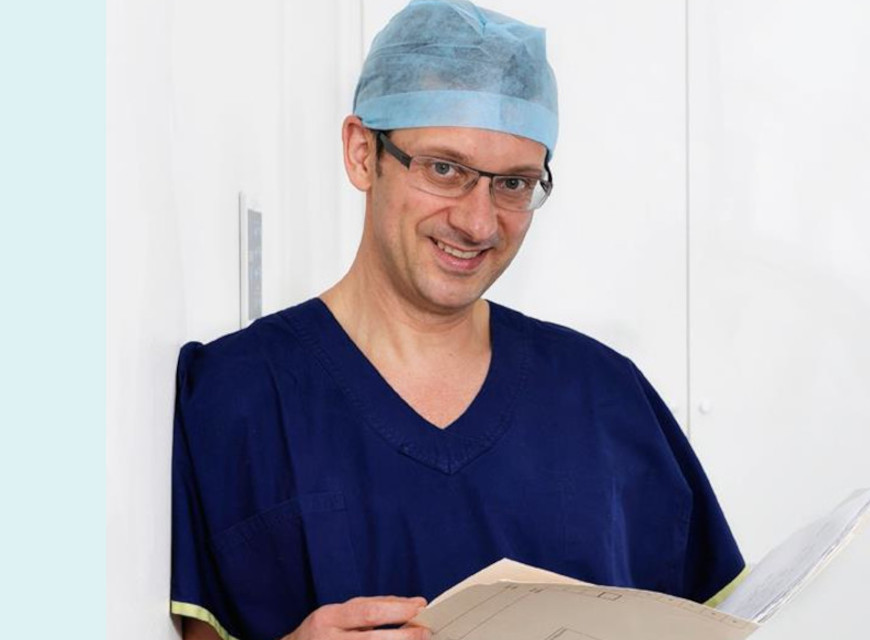
Experienced Plastic Surgeon
Dr. Mark Kohout
A qualified plastic surgeon who operates with care and integrity, based in central Sydney with over 20 years of experience in the cosmetic field. His extensive training and experience assures patients they are in highly trained surgical hands. Dr. Kohout is a dedicated, friendly professional who is committed to providing the high quality care, support and results, alongside his compassionate team.
Dr Mark Kohout (MED0001133000)
Specialist Plastic Surgeon
Specialist registration in Surgery – Plastic Surgery


